The bikepacking boom has brought a new era of bikes and components appropriate for the road less travelled, and the Tumbleweed Prospector is one of the very best. Daniel Molloy, the owner of Tumbleweed Bikes, shares a story that is nothing short of extraordinary and provides an inspiring insight into what’s possible when you tirelessly invest in your dreams and ambitions.
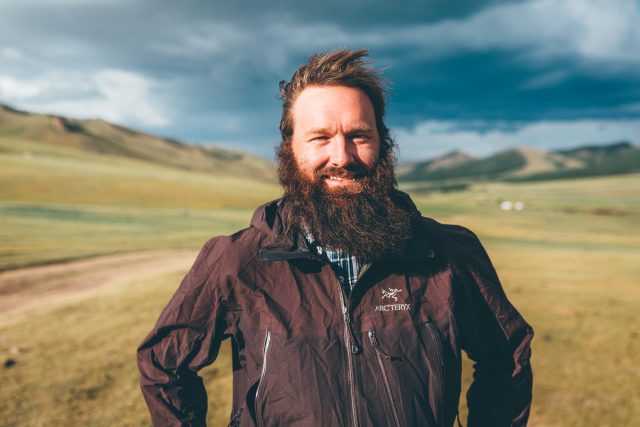
I’ve always had a lot of respect for Daniel and his company but talking to him in person only bolstered this tenfold. In this interview, we discuss his early life, motivations for establishing Tumbleweed, the sacrifices and dedication required to create a successful bicycle company, and what makes the Prospector such a revered bikepacking rig. Finally, we take a look at Tumbleweed’s exciting new offering, the Stargazer, before wrapping up with some thoughts on how the bikepacking world has evolved and his plans for the future.
What was life like before Tumbleweed?
I grew up in California, in the Central Valley. I moved to San Diego when I was 19 for college, and that’s where I got into riding. It was here that I dabbled in track, road racing, trail riding, and, crucially, bike touring. I eventually found my way back to the Bay Area, living in Oakland, San Francisco, and finished school there. I started working at Rivendell as a bike mechanic and became more obsessed with bicycle touring. I graduated college just in time for the 2008 recession, which meant jobs were scarce. Subsequently, I continued working as a bike mechanic, honing my skill set and committing to larger international tours.
I became more interested in bike design but never thought I’d start my own company. I worked in a few high-end shops in the Bay Area but finished up at a little place in Oakland called Montano Velo, which also had their house brand of bike frames called “Broakland” (designed by the owner Jason Montano). At this point, I’d done a lot of cool tours, including rides in South America, India, and completed the Great Divide.
I always built a bike for my adventures, as I was never happy with off-the-shelf options, and that eventually led to the Prospector. I pitched the bike to Jason, but he was more interested in Italian-inspired road racing bikes and asked me why I didn’t start my own company to manufacture it. I had no money or any clue how to start. Undeterred, I began working night shifts with a catering company, alongside my full-time position as a bicycle mechanic. It took everything to get the money to produce prototype frames. In the end, I connected with some great people in the industry, and they helped guide me towards getting a production run of frames built. I visited Taiwan, toured the factories, and seriously considered what it would require to produce a high-end steel expedition bike. It’s one thing to have the idea, but you have to make the product for people to take you seriously.
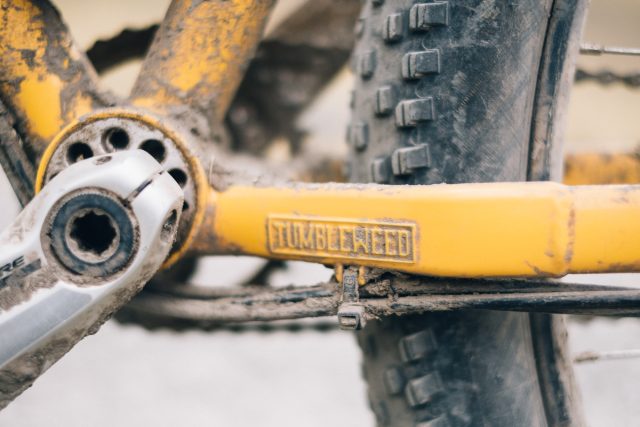
Can you tell me a little about your early bike tours and how that led to riding and filming the Tumbleweed Peru Divide film El Silencio?
Bike touring ultimately led me to establish Tumbleweed. The initial goal was to create one bike—the ultimate expedition mountain rig. When I worked at Rivendell, myself and the owner Grant often camped once a week, straight from the shop into the mountains. He was one of my bike touring mentors, and I was working there when I set out to complete the Great Divide Mountain bike route in 2008. I spent three months doing that trip, stretching it out as long as I could, fly fishing from Canada to the Mexican border. That was a life-changing adventure—living on the bike, figuring things out; I’d say that was my coming of age experience. That trip motivated me to continue a career in the bike industry and inspired me to do a big ride every year or two. I also studied abroad in Germany and brought two bikes along, so I rode lots of European routes between semesters. After the Great Divide [trip], I convinced a few buddies to[go on] a bikepacking trip guided by Cass Gilbert (whileoutriding.com) in the Indian Himalayas. I went there and completed the Manali to Leh bike tour. That was my first big international trip, and it was incredible: a huge culture shock, massive altitude changes, and stunning scenery. [Finishing] the Great Divide, then touring India blew my mind; I couldn’t imagine not doing big tours in the future. I then went on to ride down Chile and into Argentina.
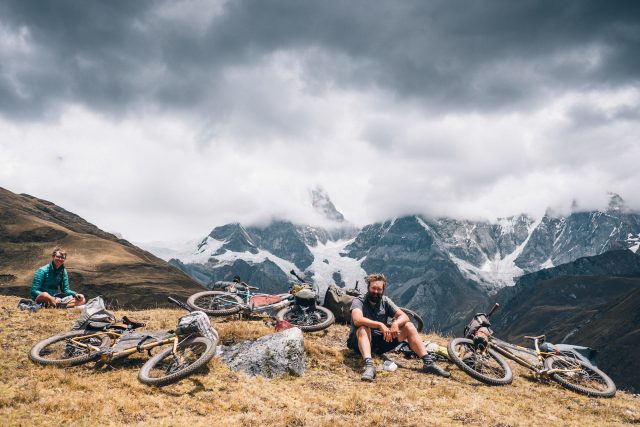
I had known Jay Ritchey (jaybirdfilms.com) from back in my Rivendell days, and the first ride we did together (along with Cass Gilbert) was in Mongolia, with the proof-of-concept Tumbleweed frames. I reached out to him about the Peru Divide film because I love the work he produces. He’s amazing at telling stories and has a fly-on-the-wall/run-and-gun kind of style. I realize that good filmmaking is more about the story and the vision than technical skill. Jay was just one man and his camera, yet he has this incredible ability to visualize the scene and tell the story. He also makes bikepacking bags (bagsxbird.com); such a talented and intelligent guy. In honesty, whilst they were promotional videos, I loved the opportunity to document each trip, as they’re all so special. My daily life is building bikes, so it’s nice to watch these things back and relive them. It’s funny, you start a bike company hoping to ride all the time and do lots of trips, but the reality is a lot of work.
Until very recently, the Prospector was your first and only bike. However, it became a popular choice in the bikepacking world. What makes the Prospector so special? Has it evolved since the first edition?
I started work as a bike mechanic back when Surly was doing a lot of their most iconic bikes, like the Pugsley, ECR, Krampus, etc. —just awesome bikes that went against the industry. I could definitely see the appeal of those bikes; they’re versatile [and] affordable, and I built up a dozen of them over the years for different rides. I’ve been a fan of Rohloff for a long time, and whilst many Surly bikes are compatible, I wanted something built specifically around that system and took full advantage of the benefits. There are not many production bikes built around the Rohloff, which differentiates the Prospector from the competition.

In 2010, I had Curtis Inglis, from Retrotec bikes, build me a custom 26-inch Rohloff expedition bike, which I rode in the Indian Himalayas. I carried forward a lot of that bike’s functionality and expanded on it for the Prospector. I wanted to create a bike built around the Rohloff that was field-serviceable, incorporated external cable routing, had a simple eccentric bottom bracket, bombproof drivetrain, tonnes of tire clearance, and a strong frame. Moreover, the design showcases custom drop-outs that allow the wheel to slot in and out, which means the bike can be completely stripped down with ease. This is a bike you can buy, set up, and never have to upgrade. I didn’t engineer the bike to have mass appeal; it targets serious bike nerds already doing big trips. It has evolved a bit over the years; for example, I added an option for a thru-axle fork so that you can run suspension, and we added the dropper-post routing. A lot of small changes, but the core design has largely remained the same.
Can you tell me about the manufacturing process?
I work with a small family-run factory in Taiwan that specializes in Chromoly and Titanium frames. We went with them because they hit a very tight tolerance spec for the Prospector and have strict quality control. The process of designing a bike is as follows: I have an idea for a bike, fill out a spreadsheet with the specs, send this to my trading company, and they coordinate with the factory to turn my numbers into a technical drawing. It’s a lot of back and forth as I go over the drawing and make various revisions over the course of a few months until we’re ready to build prototypes. Once I get the prototype, I’ll ride it for several months and make a list of changes. Prototypes are pretty close, but there are still plenty of small tweaks. Several months later, after many small alterations, I finally sign off on production.
I’m using all my hard-earned money for this; I’m not a product designer for a big brand, and I don’t have a lot of room for error. It’s a serious endeavor, and that part causes me more stress than anything else. The Prospector took me two years from concept to production, and the Stargazer has taken three years. You can put a bike to market just because you want to make money, but every Tumbleweed bike is personal to me, and I don’t want to put anything out there that I’m not 100 percent happy with.
You recently announced the launch of your second bike, the Stargazer. Was it scary to release another bike after the success of the first?
It’s hard when you have just one bike because everyone knows you for it. There are certain expectations and ideas about what the next bike is going to be. It was interesting to see how the brand is perceived, and I think a lot of people consider Tumbleweed an exclusively Rohloff-focused company. Ultimately, the bikes I’m making are the bikes I want in my garage. The Prospector fits a certain niche, so I wanted a new bike that was complementary and focused on a different style of riding. You could own a Prospector and a Stargazer, they do different things, but every time you go to the garage, it’s hard to choose. The Stargazer is a whole different concept, and it’s been tricky, as the most common question is, “Can I run a Rohloff?” I have to explain that we have the Prospector for that. They’re cousins, not identical twins.
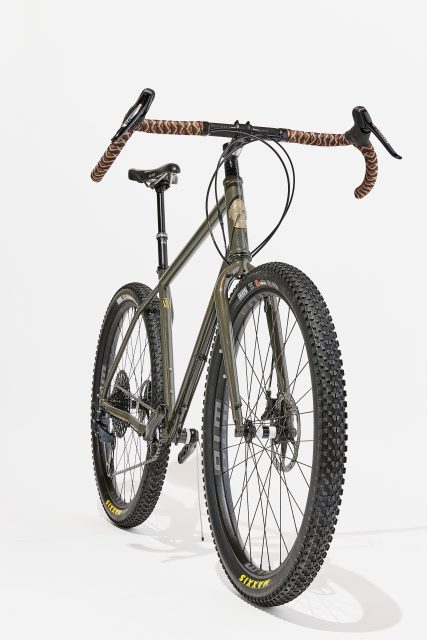
What were the key motivations for bringing the Stargazer to the market?
I’ve always owned drop bar cyclocross and monstercross bikes but wished I could run bigger tires and lower gears. The plan was to manufacture a super high-end production bike with crazy wide gearing, mountain bike functionality, and fenders—something you can ride every day or use for the commute while allowing for big tires and the ability to ride on technical trails. Like the Prospector, it’s the bike I’ve always wanted.
When we moved to Boise a few years ago, we only had the Prospector, which we sold to a couple of our friends. Once the Stargazers got here and we built up some demos, almost every one of our friends who got a test ride has bought one. The Prospector is an extreme version of a niche bike, and for the right person, it’s perfect. The Stargazer appeals to a broader range of people, and it’s versatile in a different way.
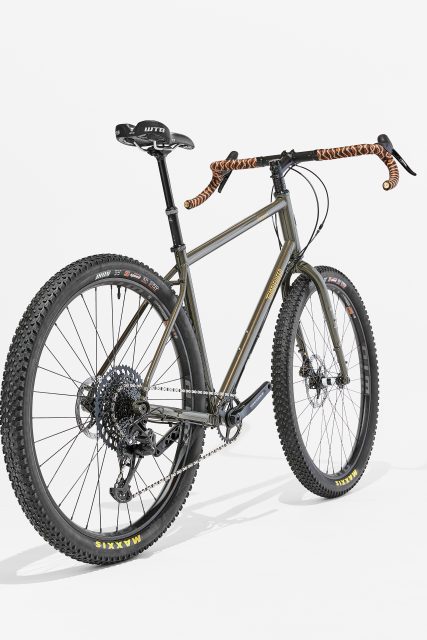
I wanted the Stargazer, like the Prospector, to be extremely high quality. If someone wanted to design something similar through a frame builder, it would cost them three times as much. The majority of bikes are designed to hit a price point because bike companies know that’s what they need to do to sell a lot of units. Alternatively, I want a bike that uses the very best materials, super high-end quality/craftsmanship, and is half the price of a one-off custom frame. Subsequently, I see these bikes as [having] incredible value; [they are] nicer than many off-the-shelf alternatives. We’re using world-class craftsmen in the best factory with access to the highest quality materials and tubing. The reason they’re less expensive is because they’re done in small batches, and consequently, you’re receiving a hand-built frame, but it’s made in a production run, so it’s half the price. That said, I think buying a custom frame is incredible, [involving] beautiful work from artists, and I think everyone should consider having a frame made at some point.
Briefly outline why someone would choose the Stargazer over the Prospector (and vice-versa)?
There are a lot of steel bikes that are versatile expedition rigs, but the Prospector is specifically built around the Rohloff. That’s the big difference between the two models. If you’re doing expeditions and want a bulletproof setup, or you’re not confident servicing your drivetrain in the middle of nowhere, then the Prospector is perfect. However, if someone is more interested in local trips, shorter rides, drop bars, and requires something versatile to ride every day, then the Stargazer is a great option. It has all the same rack mounts as the Prospector, but it’s lighter and uses off-the-shelf parts that many people are familiar with while integrating modern standards. It enables you to commute to work, ride singletrack [trails], camp out overnight, and enjoy longer tours. It performs in all scenarios.

How has the bikepacking world evolved since you founded Tumbleweed?
The bikepacking world has split into a couple of different categories, namely touring and racing. When I first became interested in bikepacking, the only big race I was aware of was the Great Divide, and there have been many more events established in recent years. I feel like the bikepacking world began with people who basically wanted to tour on mountain bikes; that’s how I discovered it. At the time, I wondered if there were people touring on mountain bikes, and that’s when I discovered the Great Divide route. It’s the non-competitive, self-supporting, super remote riding that I identify with, and that’s what the Prospector was born out of. Then there’s this other branch of bikepacking that’s competitive and ultra-lightweight, which I understand and appreciate, but I like to take my time off the bike and enjoy the journey. The bikes I produce reflect my approach to bikepacking and life in general.
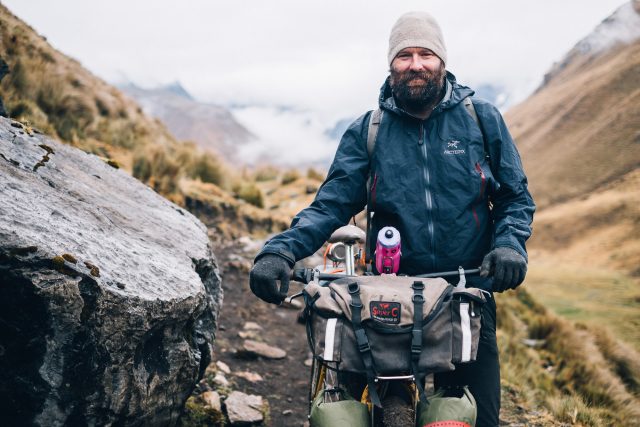
Future plans for the company and yourself?
It’s a really exciting time for the brand. We’re growing, and the biggest challenge at the moment is the supply chain issue. We’ve ordered bikes for the next two-and-a-half years when normally we would only be six months ahead. We love our new space, we have a new employee, and I’m focused on continuing projects I couldn’t afford to pursue in the early stages. Ultimately, our future goal is to remain true to our core mission, which is creating high-end quality bikes and components for off-road touring.
Where can we find you?
Instagram: tumbleweedbikes


